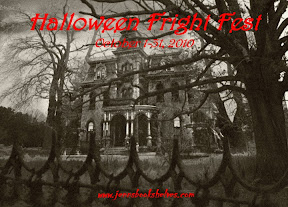Today’s guest post comes from Howard Sherman, Chairman, CEO, President & Implementor of Malinche, LLC, a publisher of interactive fiction. I “met” Howard on Twitter, where he introduced me to lichs, an often unforgotten “creature.” So with that, please welcome Howard!
The UnSung Icons of the Horror World
When most of us think of a horror novel what comes to mind? Vampires mostly, demons occasionally and ghosts most of the rest of the time.
But what about the lich or the troll or the basilisk?
There dozens of undead denizens that can scare us to death that seem to have been banished to a forgotten realm. Hopefully I can change all that.
The essential elements of a horror novel are:
- Our protagonist who is immersed in a larger-than-life scenario of danger of doom with a constant, ever-increasing flow of fear
- Our hero’s source of horror – a creature or creatures who bring about the setting that scares the protagonist to death. Possibly evil but not necessarily.
- Our hero’s goal – mere survival and escape? Rescue of a loved one? Saving the world from aforementioned horror or evil? etc. etc.
As both a reader and a writer I’m more-or-less numb to vampire stories at this point. Vampires have been overused to the point of absurdity. I can appreciate a truly good horror story with a vampire (or vampires) at the center of it all but let’s all be honest with ourselves – the vampire thing is getting really old. No pun intended.
I’ve got a similar reaction to ghosts. Been there, done that. Bought the shirt, the bumper sticker and the bobble head.
But what about the basilisk?
You’re thinking, “What’s that?” aren’t you?
Let’s turn to Wikipedia for a quick answer:
In European bestiaries and legends, a basilisk (English pronunciation: /ˈbæzɪlɪsk/[1], from the Greek βασιλίσκος basilískos, “little king”; Latin Regulus) is a legendary reptile reputed to be king of serpents and said to have the power to cause death with a single glance. According to the Naturalis Historia of Pliny the Elder, the basilisk of Cyrene is a small snake, “being not more than twelve fingers in length”,[2] that is so venomous that it leaves a wide trail of deadly venom in its wake, and its gaze is likewise lethal; its weakness is in the odour of the weasel, which, according to Pliny, was thrown into the basilisk’s hole, recognisable because all the surrounding shrubs and grass had been scorched by its presence.
I can imagine a dozen scare-you-senseless horror stories involving a basilisk.
Here’s one I whipped up in my head in just under ten seconds:
A young American couple (boy/girl or man/wife) head across the pond to inspect the male’s (or female’s) recently-acquired inheritance; a grand old estate set in the English countryside. It’s a vast piece of land. While wandering far from the castle (or mansion, if you prefer) a curious-looking black hole in the ground brings an inexplicable, primal sense of foreboding. Curiosity eventually overtakes them and they head down the hole to explore… stoking the ire of the basilisk who mercilessly pursues and taunts our protagonists in many interesting ways and at many inconvenient times until the final showdown.
Sounds good, right? Give me a bit more time than 10 seconds and I can whip up an impressive jacket cover before tearing into chapter 1. I can envision an audience-enticing movie trailer along similar lines.
I can easily imagine audiences devouring newly-minted horror along these lines while tapping into an ancient aspect of horror literature.
There are even more possibilities if we lend the horror novel to the lich.
Wait, don’t tell me. You don’t know what a lich is, do you?
Again, we’ll turn to Wikipedia for a stock answer:
In modern fantasy fiction, a lich (pronounced /ˈlɪtʃ/)[1] (sometimes spelled liche, cognate to German Leiche “corpse”) is a type of undead creature. Often such a creature is the result of a transformation, as a powerful magician or king striving for eternal life uses spells or rituals to bind his intellect to his animated corpse and thereby achieve a form of immortality. Liches are depicted as being clearly cadaverous, their bodies desiccated or even completely skeletal. Liches are often depicted as holding power over hordes of lesser undead creatures, using them as their soldiers and servants, and thus are a threat both individually and as leaders of belligerent forces.
Don’t let the fantasy adventure elements fool you; lichs can be seriously scary. I’ve implemented lichs in a fantasy context but quickly changed the mood of the story from light to dark with a snap of the fingers.
Dark fantasy with a lich? Easy.
A soul-shaking horror novel with an undead, basically immortal and unkillable wizard with vast sorceral powers coming after the main character? Wicked!
Oh sure, you can argue that a vampire is in the same category as the lich in the sense that both are undead (making them generally immortal) but the vampire has many more ways he can be killed and far fewer ways of inflicting harm on his would-be victims.
There’s very little that can hold back a lich. They can cast any number of spells as they access their storehouse of arcane lore as the protagonist tries desperately to kill them. Wooden stakes, bulbs of garlic and crucifixes would do little more than make a lich giggle.
And that’s when the fun of reading such a horror novel begins.
Howard A. Sherman
Get Inside a Story
http://www.inthestory.com







2 Responses to Guest Post: Lichs and Trolls and Basilisks-Oh My!